When riding any recreational vehicle, it’s important to protect your head from injury. To stay safe and comfortable there are many factors to be taken into consideration when buying an ATV riding helmet. If you want your helmet to look cool, that’s fine, but also make sure it feels comfortable and will protect you in a crash.
You don’t need to go out and spend 300+ dollars on a fancy helmet, unless that’s what works for you. I do want to urge you not to spend less than $100 on a helmet though. I’ve tried several helmets over the years, probably over 50 riding helmets. And the cheaper ones (under $100) are not very good. They wear out, don’t vent very well, and the protection they offer is very poor. It doesn’t have to brake the bank either though, the helmet I recommend and use now is about $150 online.
After testing out and using many helmets over the years, the one I now use and recommend is the Fox Racing V1 Helmet found here on Amazon. This helmet comes in different sizes and colors to customize your look, and has exceeded ECE22.05 and DOT safety certifications. It has 9 intake vents and 4 exhaust vents for airflow. I really like the airflow of this helmet, it will keep me cooler than most of the other helmets I’ve tried. This helmet is the perfect balance between price and quality, not very expensive, but has the same features as the high end pricey helmets. I will buy this helmet again the next time I need one.
There are a few things to consider when looking for a helmet. Safety standards are at the top of the list of course, no point in wearing a helmet that doesn’t protect you. But there are other things to consider to help you get the most out of your money.
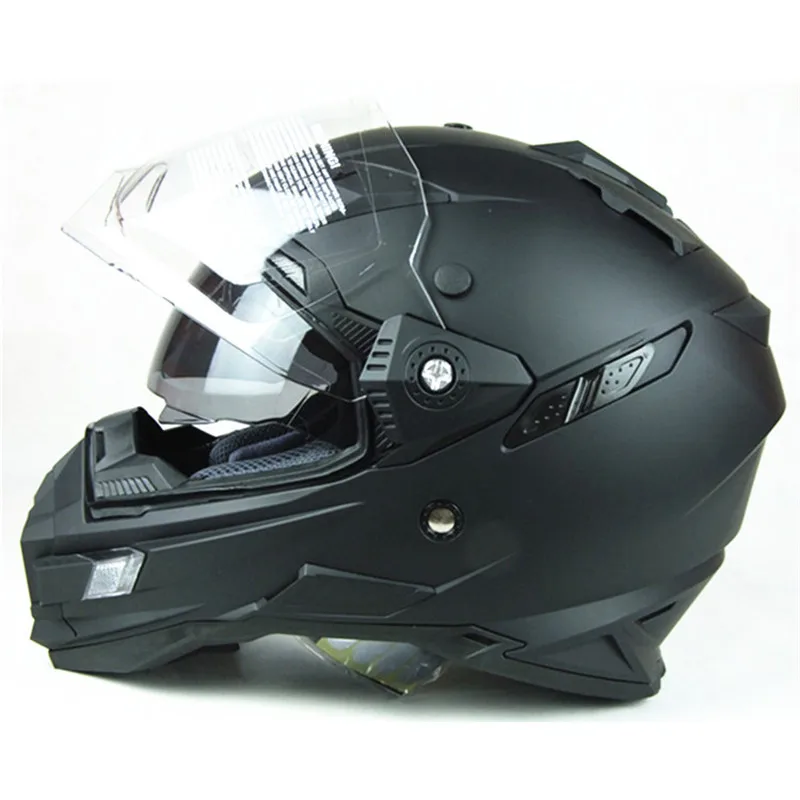 But it kind of ruins the riding experience for me if I feel overheated. Get something with good ventilation to keep you comfortable on hot summer days.
But it kind of ruins the riding experience for me if I feel overheated. Get something with good ventilation to keep you comfortable on hot summer days.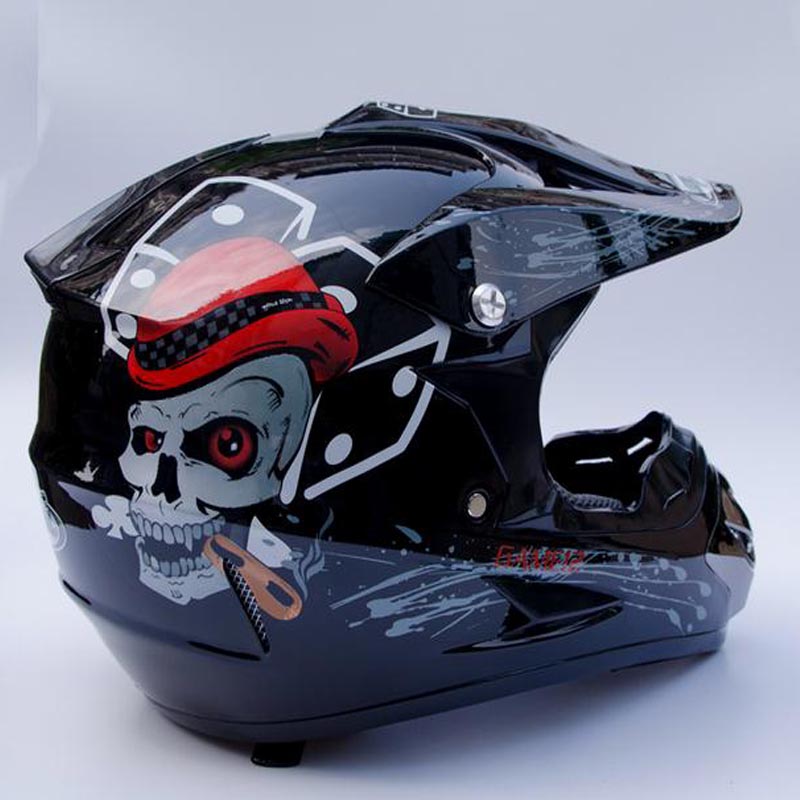 It’s worth the extra money if it saves your life, and you can usually get a good one for under $200. To me, it’s totally worth it.
It’s worth the extra money if it saves your life, and you can usually get a good one for under $200. To me, it’s totally worth it.A helmet is by far the most important piece of safety gear to wear while riding an ATV. Getting a head injury could not only end your day of riding early, but it could affect you the rest of your life. If you wear a helmet that doesn’t pass any safety standards, you’re putting yourself at risk.
I would highly recommend you buy a new helmet for yourself. Do not buy used or second hand for this one. You have no idea how much the helmets been banged around, and you could end up getting one that has a weakened structural integrity.
It may look fine and held together, but in a crash it could easily brake, leaving you vulnerable. Helmets are supposed to be replaced regularly, and you won’t know for sure how old the helmet actually is. Get a new helmet, better safe than sorry in this case.
A lot of countries have their own safety standards set in place, and some require you to wear a helmet by law. Even if your country or state doesn’t require a helmet by law, many tracks you could ride at will require it.
Even if your country or state doesn’t require a helmet by law, many tracks you could ride at will require it.
In the United States, the Department Of Transportation sets the minimum safety requirements for helmets. If your helmet passes these minimum safety requirements, it will be considered DOT approved. The UK has the British Standard and the EU has the ECE22.05.
Although each country has pretty good safety standards, the DOT is on the lower end. At least get a DOT approved helmet, if you find one approved by DOT plus another, that’s a bonus.
One of the highest safety standards is the Snell approval. If you get a helmet that has a Snell rating, you can rest assured you have an extremely safe helmet. The Snell Memorial Foundation provides some of the strictest testing in the world to guarantee a high level of helmet safety.
Helmets should be replaced after 3-5 years of use according to most manufacturers. They also recommend replacing 7 years after the production date, if they have been in a crash, or if they have taken damage in some other way. Fox themselves recommends replacing after 5 years of use, nothing about the production date, and after a crash even if there are no physical signs of damage.
Fox themselves recommends replacing after 5 years of use, nothing about the production date, and after a crash even if there are no physical signs of damage.
The core of a helmet is usually made from polystyrene or polypropylene foam, which will crush upon impact. This is designed so that the foam will absorb most of the energy from the impact, rather than your head. The outer shell is usually made out of kevlar, fiberglass, polycarbonate plastic, or some other rigid material. After an impact, the outer shell may look fine, but the core foam is compacted, and will not provide the same level of protection anymore.
The foam can even be compromised by dropping the helmet too many times or by tossing the helmet around. Take good care of your helmet, and it will last longer, saving you money.
Getting a good fitting helmet is as much about safety as it is about comfort. The helmet needs to fit snugly and comfortably to be able to protect you properly. A common way to test a helmet for good fit is to get the helmet on and firmly fasten the chin strap.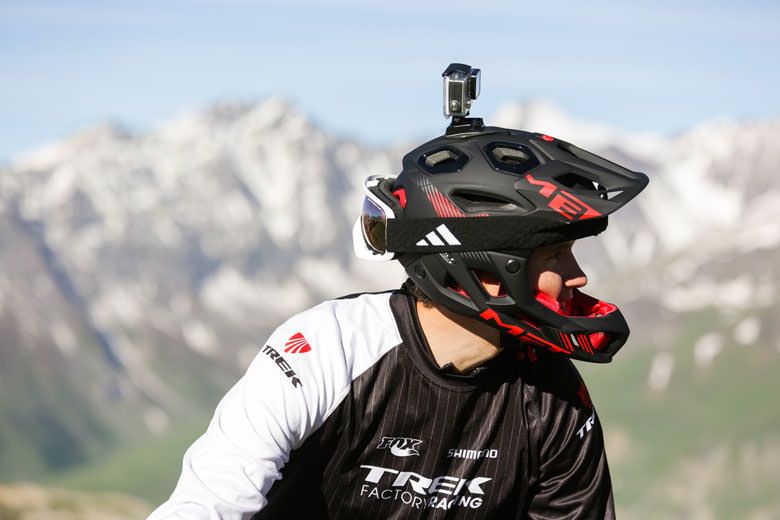
Now rotate the helmet from side to side and check whether your head moves with the helmet or not. The skin on your face should actually move with the helmet as you rotate it.
There’s not much to maintaining your helmet. Keep it clean, and dry it out if it gets wet or muddy. Don’t throw the helmet around too much, I don’t even let mine roll around in the back of the truck, I always put things on either side to keep it in place. A good riding helmet should last you years, if you take care of it properly.
ATV riding helmets have gotten some cool new improvements over the past couple years.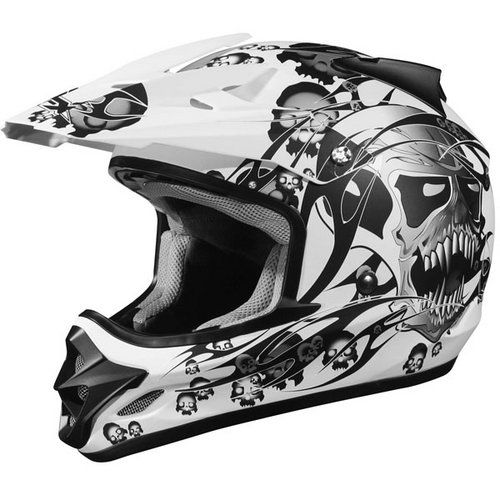 Here are some of the helmet technology features that stand out.
Here are some of the helmet technology features that stand out.
 This comes in handy after a long day of sweating in the helmet.
This comes in handy after a long day of sweating in the helmet.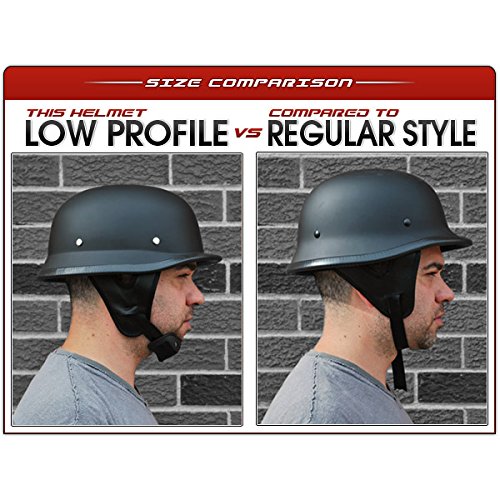
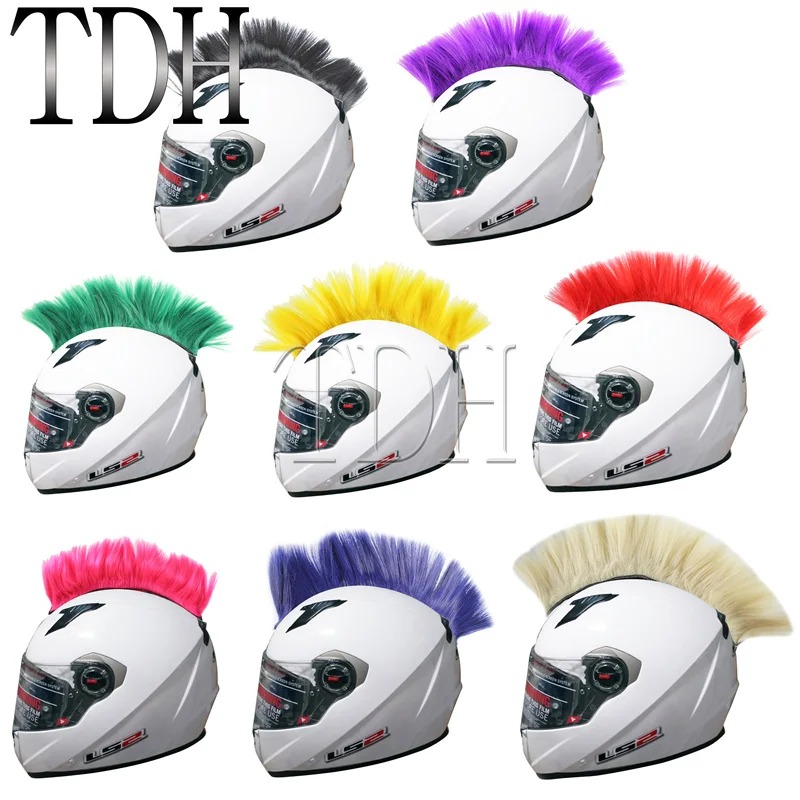 The price isn’t that bad, but I have some concerns about the ventilation. It doesn’t seem like the helmet gives as much airflow as I would like.
The price isn’t that bad, but I have some concerns about the ventilation. It doesn’t seem like the helmet gives as much airflow as I would like.
If you know your helmet size, there are some great deals you can find online. In fact, most of the stores I’ve been to, charge twice as much for the same gear I found on Amazon. If you don’t know your helmet size though, I suggest going to a store to try some on first.
Getting a good fitting helmet is important for enjoying your riding, comfort, and safety. Don’t forget the goggles, to see my top pick for ATV riding goggles check out this article.
Sharing is caring!
July 6, 2011
When it comes to helmets, the decision to wear one can be a matter of life or death in the event of a bad spill. So obviously a helmet is the single most important piece of riding gear an ATV enthusiast can wear.
Those of us who always wear helmets often wonder what the problem is with folks who refuse to do so. Modern helmets are very comfortable and lightweight, providing the rider with a lot of confidence and protection from the elements.
Modern helmets are very comfortable and lightweight, providing the rider with a lot of confidence and protection from the elements.
Many off-road helmets are also vented, so getting too hot is no longer a valid excuse for not wearing one. Of course, if you happen to be riding in an area where it's against the law to ride without a helmet, well you aren't going to have a choice!
There’s an old saying in the off-road world, “If you’ve got a $10 head, buy a $10 helmet.†Basically, it’s warning riders to steer clear of the really cheap helmets. Not all helmets are as effective as the next, and the quality helmet makers have gone to great lengths to give their customers the best protection available.
In fact, one of the first things to look for when buying a helmet is to see if it meets one of the two performance ratings (these are stitched on the inside of the shell and on the box). The first is the Department of Transportation rating that shows the helmet meets a certain set of standards as a legal helmet for street and off-road use.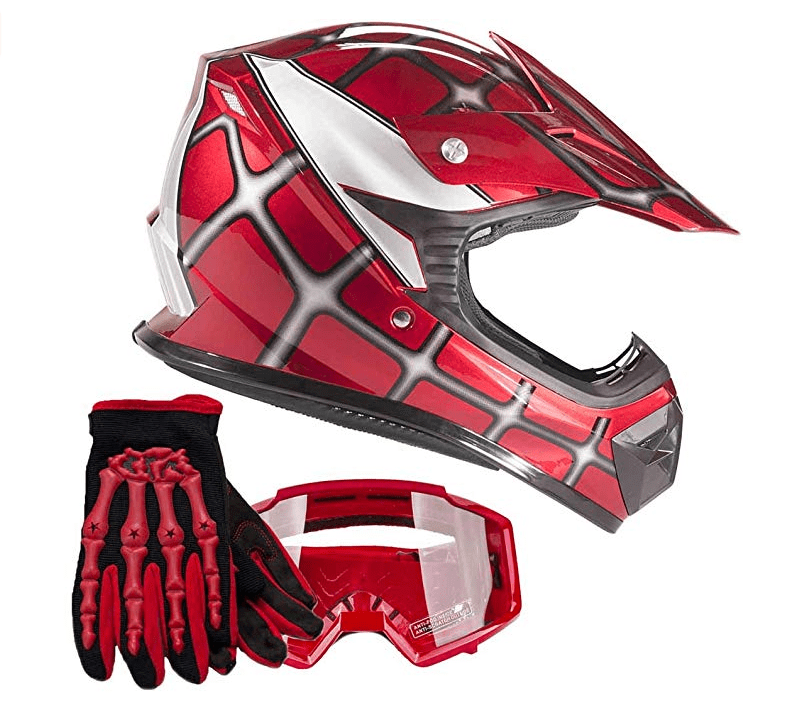 The Snell rating signifies that the helmet goes beyond the DOT standards and can withstand even harder blows.
The Snell rating signifies that the helmet goes beyond the DOT standards and can withstand even harder blows.
Most automobile, ATV, and motorcycle racers demand nothing less than a Snell rating for their headgear. Of course, the higher-quality Snell helmets are going to cost more, but you should still find plenty choices that are reasonably priced.
Now let’s face it, as with most anything that we wear, looks are an important part of the buying process. Fortunately, the style and color choices from the various manufacturers are immense. Start your new helmet search by choosing several helmet styles and colors in your price range and then begin to compare features.
Another important helmet decision is whether you want a full-face or open-face helmet. Before full-face helmets came onto the market in the early 1970s, dirt bike riders fashioned plastic mouthguards that strapped onto the bottom of the helmet. The full-face helmet eliminated the need for mouth guards and virtually all racers embraced the full-face concept by the start of the 1980s. Off-highway vehicle riders today buy considerably more full-face helmets than open-face (full-face helmets are not necessarily more expensive). And common sense says why not have the extra protections of a full-face helmet (your chin and teeth are pretty vulnerable in an open-face helmet). Full-face helmets combined with goggles also offer much better protection against the elements than open-face helmets.
Off-highway vehicle riders today buy considerably more full-face helmets than open-face (full-face helmets are not necessarily more expensive). And common sense says why not have the extra protections of a full-face helmet (your chin and teeth are pretty vulnerable in an open-face helmet). Full-face helmets combined with goggles also offer much better protection against the elements than open-face helmets.
The type of ATV riders who may choose an open face are typically those who utilize their quads for work or other outdoor recreations, such as hunting, fishing, ranching, or construction. Being able to have easy access to their face while wearing their helmet and having the added visibility is a plus. Also, the chance of having a tough spill is simply not as great as that for a trail rider or racer.
There are also other features you should be aware of while checking out helmets. First off, check for air vents that can be opened or closed for hot or cold weather. Then compare the weights (a lighter helmet is much more comfortable during a long day of riding). You should also check the construction of the visor for durability.
You should also check the construction of the visor for durability.
You may want a visor that is adjustable to your taste. Many folks who don’t ride assume that a visor on an ATV helmet is used to keep the sun out of your eyes like a baseball cap, but the primary purpose of a visor is so a rider can duck and protect his face from the dirt roost being thrown by the rider in front of him!
Getting a helmet that fits right is important for two reasons: 1) a proper fit is much more effective in a mishap, and 2) you’ll want to wear it all the time because it’s comfortable! The best way to check fit is of course to simply try a lot of helmets on. Also be aware that a medium size in one brand may be more similar to a small in another. Some of the higher-end helmets are sold in more precise sizes such as 7 1/4 or 8.
The perfect fit for a helmet is as snug as you can get it while still being comfortable. You should not be able to easily insert a finger between your forehead and the helmet lining. Similarly, the padding of a full-face helmet should press lightly against your cheeks, but here you are much more likely to insert a finger or two. With the helmet in place, try to rotate it without turning your head. If the helmet turns significantly on your head (especially if it turns enough to interfere with your vision), it is too loose and you should try the next size down. If the next size down is too tight, consider trying another brand, as each helmet manufacturer has fairly unique shell shapes. Without tightening the chinstraps, shake your head briskly from left to right a few times. The helmet should follow your head and not come out of place. Same goes if you move your head up and down quickly.
Similarly, the padding of a full-face helmet should press lightly against your cheeks, but here you are much more likely to insert a finger or two. With the helmet in place, try to rotate it without turning your head. If the helmet turns significantly on your head (especially if it turns enough to interfere with your vision), it is too loose and you should try the next size down. If the next size down is too tight, consider trying another brand, as each helmet manufacturer has fairly unique shell shapes. Without tightening the chinstraps, shake your head briskly from left to right a few times. The helmet should follow your head and not come out of place. Same goes if you move your head up and down quickly.
Now try the retention strap system. You should be able to easily strap on the helmet you choose. Once the strap is snug, grab the helmet with both hands and move it around vigorously. Your head should be moving with the helmet.
If you’re going to be wearing glasses with your helmet, make sure you try them on at this time as well.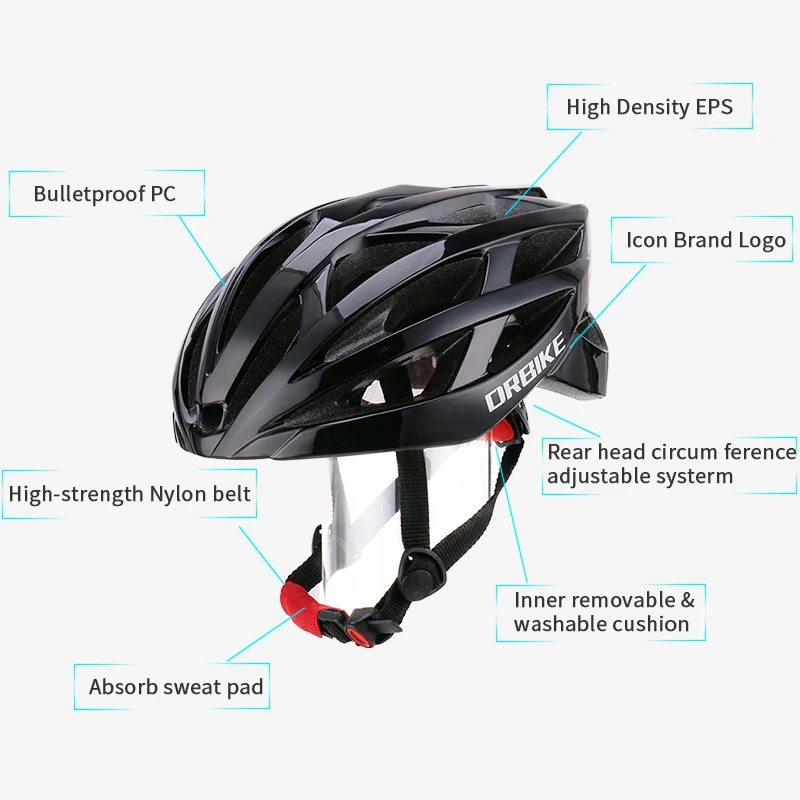 You may need a slightly looser fit in the side of your temples.
You may need a slightly looser fit in the side of your temples.
With helmets, most feature removable liners that can be thrown into the washing machine. But to stay on the safe side, don't throw this liner into the dryer; instead let it air dry. If the liner isn't removable, clean it with soap and water. Keep in mind, though, that you shouldn't use any solvents on any helmet materials-the styrofoam inner liner can easily get melted, ruining the most important part of the helmet.
If you know you are going to be riding in muddy conditions, you can make the chore of cleaning the outer shell much easier by applying a thin coat of WD-40 or Armor-All before you go riding.
You can get injured even at low speed and without falling - from a bouncing branch or stone, a torn tow rope or an insect that has hit your face. Restoring health at the same time is more expensive and longer than an ATV. Therefore, a helmet is required. From what materials and what form is safer - we will tell in the article.
Restoring health at the same time is more expensive and longer than an ATV. Therefore, a helmet is required. From what materials and what form is safer - we will tell in the article.
Helmets differ in shape, weight, material and the presence of a visor (protective glass). The division into "male" / "female" or "children's" / "adults" is conditional, they differ only in colors and size.
Lightweight, does not restrict visibility and is well ventilated. Do not interfere with drinking, eating and talking. Protect from branches, stones and a fine when meeting with a traffic police inspector. Due to the open lower part of the face, there is a high risk of jaw injury during falls and collisions. Therefore, such helmets are not suitable for an ATV.
Open helmets include helmet, three-quarter, half and jet.
Heavier and more expensive than open helmets, but completely cover the head.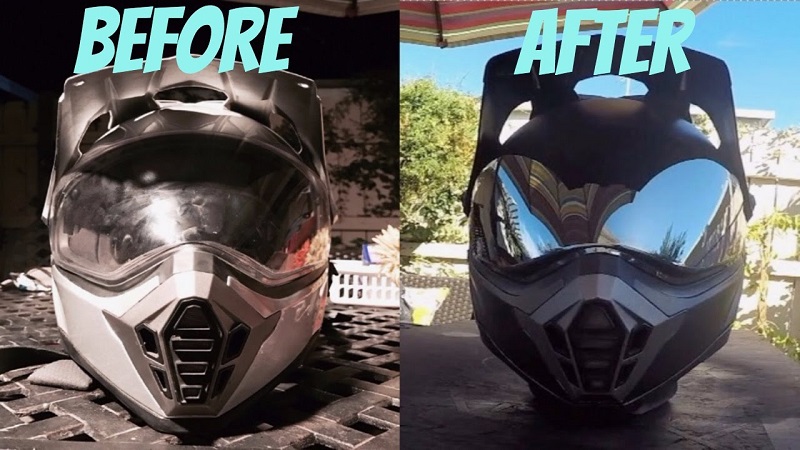 In addition to injuries, they can partially or completely protect against wind, noise, cold and dust.
In addition to injuries, they can partially or completely protect against wind, noise, cold and dust.
Int. It is the safest helmet available due to its integral construction. It is also the best in terms of noise isolation and aerodynamics, but this is irrelevant for an ATV. Of the minuses - it is stuffy to ride in it through the forest. Visibility is worse than in a cross helmet. No visor.
Cross . A kind of integral with a visor for protection from branches, sun and drizzling rain. It has an extended forum for easier breathing and reinforced chin protection. As a rule, such helmets are not equipped with a visor. Goggles are worn instead - they provide good viewing angles and ventilation. An example of a cross helmet is 509 TACTICAL.
Modular ( transformer, flip-up ). Similar to the integral, but has a lifting jaw arch. Due to this, the rider can drink, eat and communicate in a helmet. At the same time, due to the complex design, the modular is heavier and more expensive than other helmets. There may be ventilation problems and whistling when driving. The safety of the modular is the lowest among closed helmets - the arc sometimes flies out on impact. An example of a modular helmet - 509Delta R4.
At the same time, due to the complex design, the modular is heavier and more expensive than other helmets. There may be ventilation problems and whistling when driving. The safety of the modular is the lowest among closed helmets - the arc sometimes flies out on impact. An example of a modular helmet - 509Delta R4.
Integral
Cross
MODULAR 7
Hars of the ATV consisted of a solid external membrane (SCOLLUPO), internal amorticious compassion and toll.
Outer sheath can be made of thermoplastics or composites. Polycarbonate (plastic) helmets are heavier and more massive than composite ones, less durable, but cheaper. The most unreliable are made of ABS plastic. High-quality plastic is elastic, but bursts under extreme loads.
Composite helmets consist of fiberglass, aramid, fiberglass, carbon fiber, fiberglass, carbon fiber, carbon, kevlar and similar materials that are bonded with resins, compressed and baked.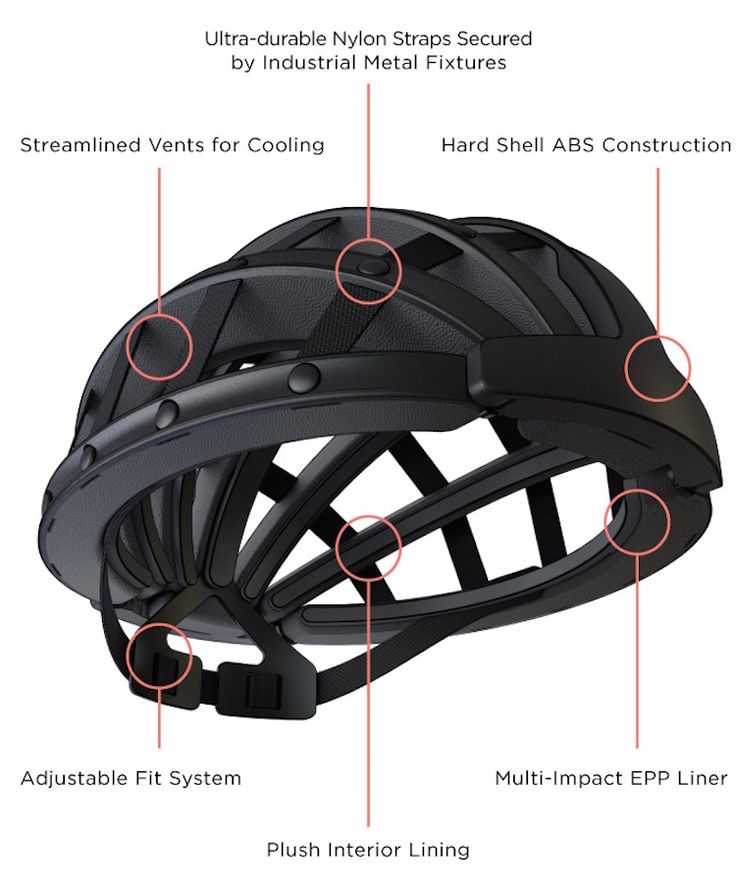 The strongest have at least three layers with different characteristics of penetration, compression / stretching and stiffness. Rinse, preventing penetrating damage. They are lighter and more reliable than plastic ones, but they are more expensive. The outer shell evenly distributes the impact energy during a crash and transfers it to the soft inner layer.
The strongest have at least three layers with different characteristics of penetration, compression / stretching and stiffness. Rinse, preventing penetrating damage. They are lighter and more reliable than plastic ones, but they are more expensive. The outer shell evenly distributes the impact energy during a crash and transfers it to the soft inner layer.
The inner shell consists of multi-layered EPS (expanded polystyrene) of different densities and thicknesses. It is a versatile, lightweight material that dampens impact energy, and over time, for convenience, takes the form of a head.
Foam seals and fabric part are added to the inner shell. In high-quality helmets, it is removable - you can wash or replace it.
The replacement part of the helmet is made from hypoallergenic fabrics. It creates additional comfort, warms in the cold and removes moisture in the heat. Synthetic is lighter and less demanding to care for, but can irritate the skin. Natural is more comfortable, but heavier, more difficult to care for and less hygienic.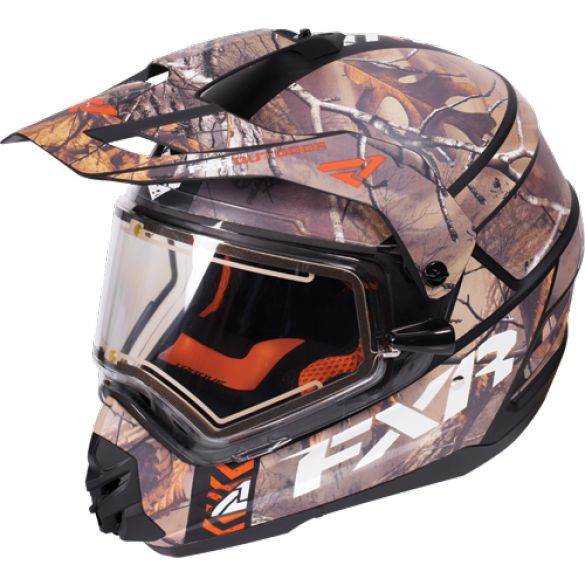
The visor is made of polycarbonate. It can be transparent, tinted or colored. There are visors with double glasses and protection against scratches. They can also be coated with films and special compositions: anti-fog, anti-reflective and anti-fogging from the inside.
The visor can be heated (anti-fogging and anti-icing) as standard or purchased separately. He receives power through the wire from the ATV, which is not always convenient for extreme driving.
Travel . A cross-country helmet is suitable for summer and spring - it is better ventilated and protects from the sun. For autumn and winter, it is better to choose an integral with built-in visor heating and an exhaled air removal system. Modular can be worn for a short walk, but on a long journey, due to its greater weight, it is less comfortable than other helmets.
Track riding and tricks . The best choice is a cross helmet made of composite materials. In addition to injuries, it will protect against overloads, in which it is easy to overstrain or damage the muscles of the neck in a heavy helmet.
The best choice is a cross helmet made of composite materials. In addition to injuries, it will protect against overloads, in which it is easy to overstrain or damage the muscles of the neck in a heavy helmet.
Household work . A cross-country helmet or integral without a visor, with good ventilation, will do.
Fit . The helmet should evenly fit the head, do not press, do not rub. A spacious helmet that dangles from the head increases the risk of injury. Therefore, you do not need to use someone else's and buy a child "for growth."
To test the fit of the helmet, use both hands to twist it side to side, resisting with your head and neck. The helmet must not rotate. Shake and turn your head. It is important that the helmet does not interfere with visibility and does not narrow the field of peripheral vision. If you wear glasses, try on a helmet with them.
Life hack for men with a narrow face - if all the helmets dangle on you, pay attention to the so-called "female" models, they are often narrower.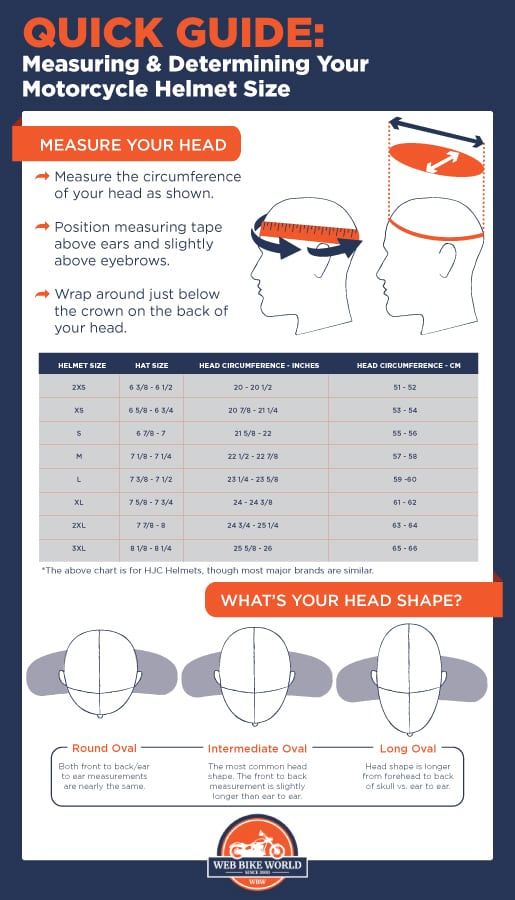 The opposite is true for women with wide cheekbones - take a closer look at the "male" models.
The opposite is true for women with wide cheekbones - take a closer look at the "male" models.
Weight . The more weight, the faster the neck and head get tired. For short walks, the extra 100 grams is not important, but it is better to overpay for them when choosing a helmet for travel and extreme riding.
Certification The helmet must be certified to world standards. Therefore, if the standard is unknown to you, ask the seller about it and double-check the information on the Internet.

An example of the location of certification marks
Less popular: GOST R 41.22-2001 (Russia), JIS (Japan), SAI AS1698 (Australia), SG or CPSA Japan (Japan), BS6658 (UK, obsolete) , ACU (Great Britain).
Expiration date and date of manufacture. These are quality markers because they are affixed, as a rule, only serious brands. The helmet cannot be used longer than the expiration date - by this time the materials lose their original protective properties.
The vents and breather are important passive protection against fogging and overheating.
Fasteners. There are different shapes, but D-rings (D-shaped fasteners-rings) are considered the most reliable, and the quick-release fastener with a ratchet is considered the most convenient.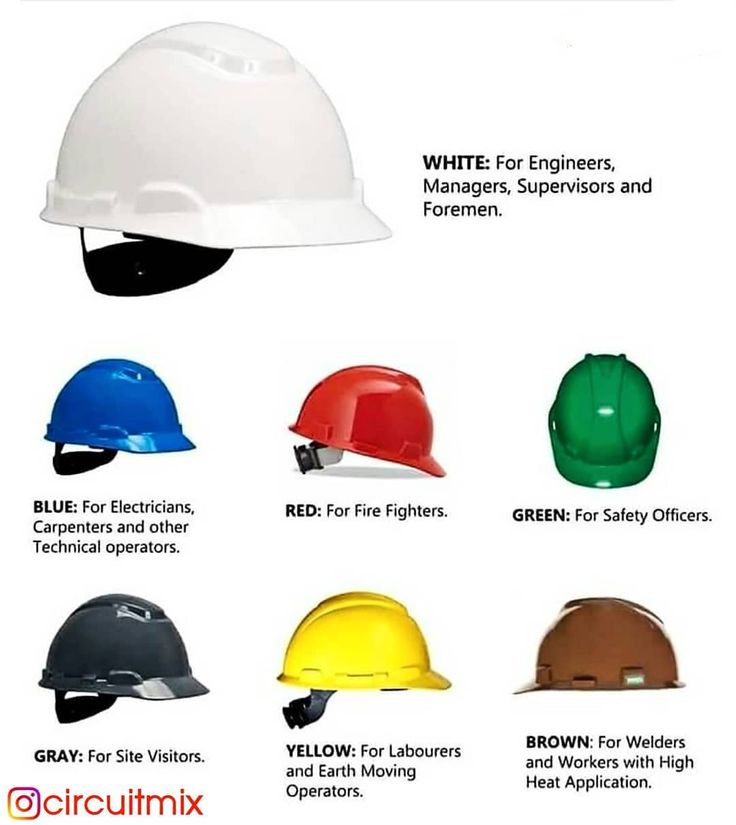
The visor lift mechanism is one of the most vulnerable parts of the helmet. Should be comfortable to operate without jamming.
A helmet is a one-time consumable to protect the head at the moment of impact. After that, you need to buy a new one. In terms of wear and aging of materials, the helmet is designed to last approximately 5 years. But, as a rule, it serves from one to three seasons.
The inner lining is wrinkled and compacted when worn. After falls, impacts, hitting small stones, microcracks appear on the surface. Accordingly, the protective properties are reduced.
After an accident, if there is visible damage, the helmet must be changed.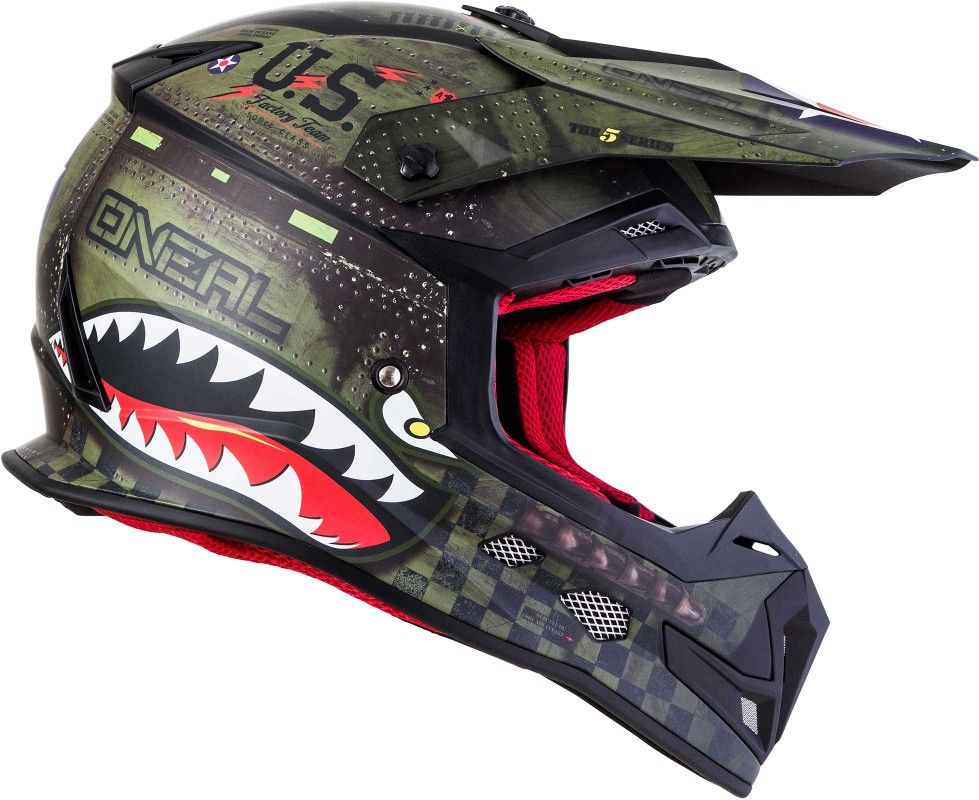 If there is no visible damage, you can use the service of checking the helmet from the manufacturer or a specialty store.
If there is no visible damage, you can use the service of checking the helmet from the manufacturer or a specialty store.
Individual parts can be replaced:
In today's article we want to talk about how to choose a helmet for an ATV, what they are, about the care of a helmet, in a word, about everything you would like to know about helmets for an ATV.
A helmet in ATV equipment is probably one of the leading places in terms of safety, because in an emergency it is designed to ensure the safety of the ATV driver's head. And therefore it is very important to choose the right helmet, which will provide not only maximum safety, but also comfort during movement, which, you see, is also very important.
First, let's take a look at what ATV helmets are.
Cross-country helmets are the most widely used among quad bikers. And this is not surprising: they have an increased viewing angle, are equipped with a large visor, a massive chin guard and are most suitable for off-road trips. The disadvantages include the insecurity of the front part, the need to use goggles and, as follows from practice, not particularly suitable for long-distance high-speed hauls.
Helmets, called "Integral" (full face), are rightfully considered the most protected, the design of the helmet of this configuration protects both the scalp and the front. The obvious advantages of "Integral" include a visor that protects the face and eyes from dirt, dust, water and insects. Also, these helmets have excellent aerodynamic characteristics, allowing for unhindered movement even in strong headwinds.
The disadvantages include the fact that at a low speed of movement in a helmet it becomes very hot, and therefore off-road trips sometimes turn into torment.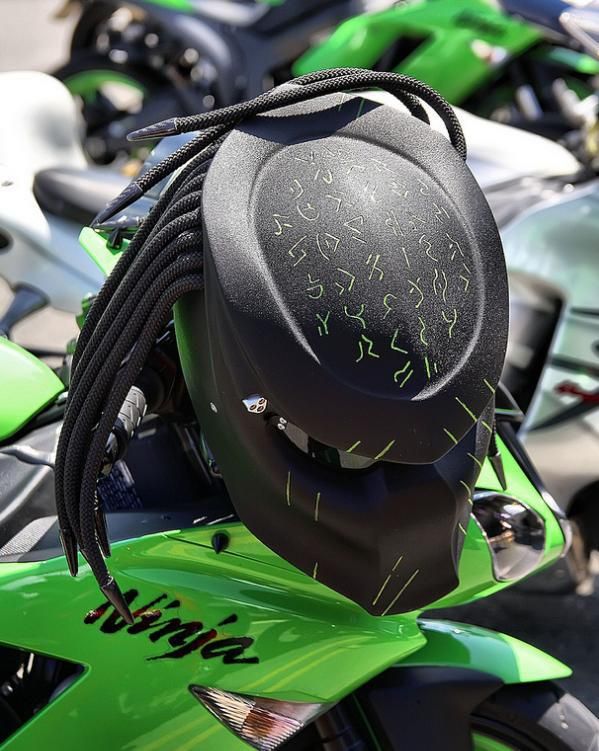 Also, very often Integral helmets have significant weight, and during long trips the load on the neck increases very much.
Also, very often Integral helmets have significant weight, and during long trips the load on the neck increases very much.
An open helmet is perhaps the most traumatic helmet, unless, of course, a hard hat is taken into account. It has a number of advantages such as a very large viewing angle, excellent ventilation, low weight, the ability to drink, smoke and eat without removing the helmet. But all the advantages are crossed out by one very important drawback - poor protection of the face and chin (most injuries in accidents on motorcycles occur on the chin). This helmet is suitable for lovers of very modest speeds and well-worn roads, or extreme sportsmen with no self-preservation instinct.
At the moment, more and more manufacturers are resorting to mixing the distinctive features of helmets, and cross models equipped with a visor, "Integrals" turning into "Modulars" and other cunning animals appear on sale.
How to choose a ATV helmet.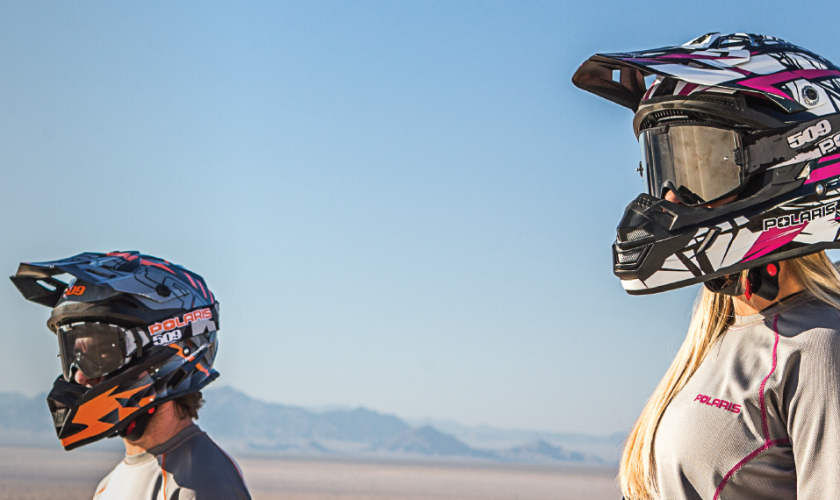
We have already talked about the configuration of helmets, and the choice in the direction of a particular model is everyone's business, now we want to give a few recommendations that will help you choose a quality helmet.
Pay attention to the weight of the helmet and if possible try to choose the model with the lightest weight.
We recommend that you look at models with thoughtful airflow and ventilation system (this mainly applies to "Integrals").
Pay close attention to the chinstrap fastening, the double D-shaped fasteners work very well here.
Remember to always fasten the chinstrap securely: failure to do so will result in death and complete uselessness of the helmet.
It is very important that the helmet fits well on the head, does not cause a feeling of excessive pressure and at the same time does not dangle. To avoid mistakes when choosing a size, follow the instructions below:
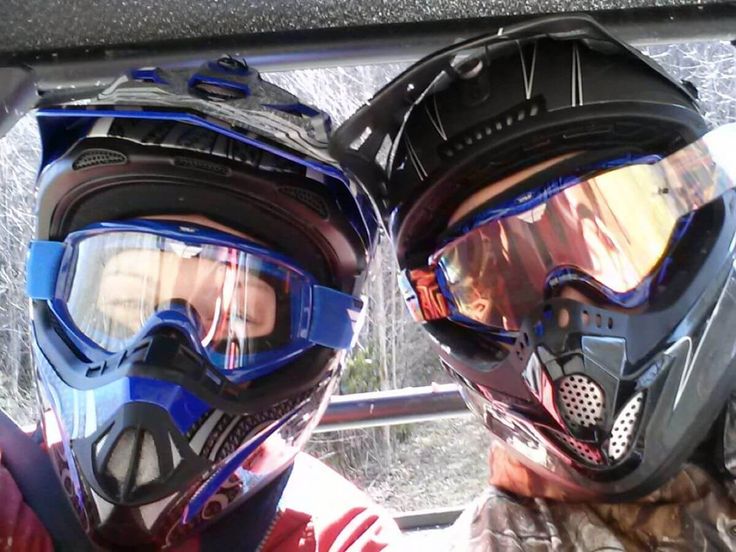
In the case when it is not possible to visit the store on your own, and you are going to buy a helmet on the Internet, you need to measure your head correctly and know the marking based on the size in cm. The table of helmet sizes by manufacturers will help you with this.
Do not forget to ask the seller about the availability of a certificate and about the reliability class of the helmet model you have chosen.
Now let's move on to such an equally important issue as helmet care.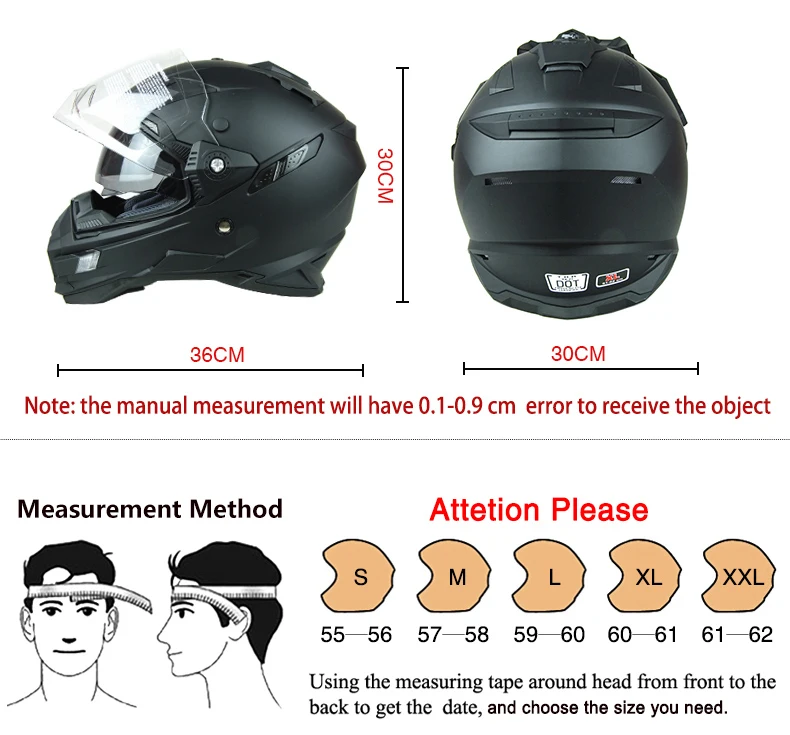
An ATV helmet is a hundred times more likely to need maintenance than, for example, a motorcycle rider's helmet. Constant exposure to sand, mud and water does the trick.
It is very important to properly care for the helmet, because this will allow it to serve you faithfully for many years:
